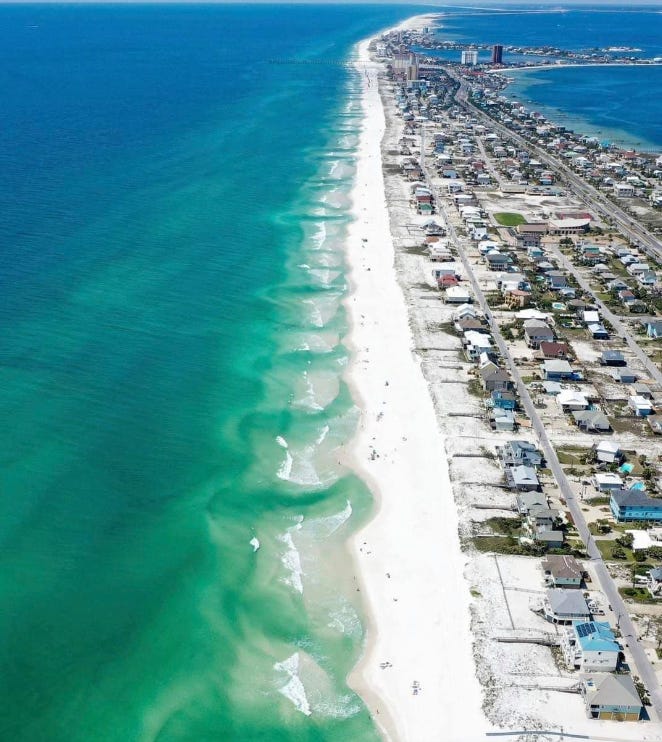Can You Spot a Rip Current?
The rip current illustration doesn't look like a real rip, as seen from the beach
As a regular open-water swimmer and someone who geeks out on public health messages, I can spot issues with the rip current warning signs better than I can spot a rip.
Warning signs started popping up on beaches in 2004 as part of the “Break the Grip of the Rip”® campaign. Twenty years later, adult drownings are on the rise. It’s time for a change.
Rip currents are fast-moving currents of water moving away from shore. They can pull people away from shore as far as one mile and are responsible for 80% of beach lifeguard rescues. Some may refer to them as “riptides” or “undertow”, but the term recommended by weather scientists is “rip current.”
The signs are universally posted on US beaches and have been adopted by countries worldwide. They accurately provide instructions about how to get out of a rip and the campaign has successfully raised awareness about the danger.
But for the average beachgoer, knowing what’s a rip and what’s not based on the sign may not be clear.
Art only imitates real life
Wherever there is a beach with surf, a rip can occur. The US Rip Current Task Force had the difficult job of developing material for four very different coastline geographies in the US: the Pacific, Atlantic, Gulf of Mexico, and Great Lakes.
The task force settled on a generic illustration.
When I first started swimming on Florida’s Gulf Coast, I intently studied the illustration. I imagined giant waves crashing and an obvious stream of water heading out to sea.
I was wrong.
Rips are like rivers out to the sea. The entrance to a rip actually often looks like a calm and peaceful place to enter the water.
Rips also often form around sandbars or water structures, like piers and jetties, where waves might be seen on only one side of the rip, unlike the sign showing waves on both sides. Oftentimes, there is more than one rip in an area.

Who looks at the beach from above?
It’s easy to spot a rip from above and some experts recommend that beachgoers view the beach from a high point like a hillside or pier before entering the water.
Most beachgoers I see lugging their coolers and umbrellas are focused on finding an open spot in the sand, not on finding a hill to climb. Unfortunately, the artist chose to illustrate a rip from the perspective of looking down at a rip current, helpful to understanding the physics of rip currents, not for identifying a rip at beach level.
The rip in this photo is directly in front of the red umbrella. It’s the water between the two areas of wave action. If you don’t see it without an arrow to point it out, or are you’re confused now, you’re not alone. Each year drownings occur because people unknowingly enter the water where rip currents are active.
The Break the Grip of the Rip campaign sign has worldwide recognition. It did its job to raise awareness. Now lets help people know what they are looking at.
Let’s add QR codes with photos of local rip currents to signs on local beaches. Technology that didn’t exist 20 years ago could save lives today.
Enjoy the beach. Learn to swim. Always swim near a lifeguard.
Just don’t count on the signs alone to help you spot a rip.




